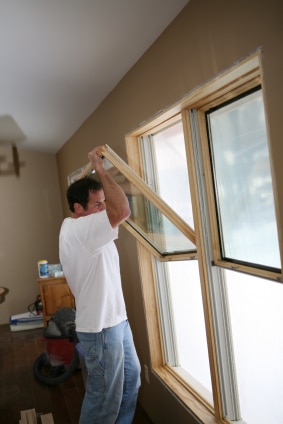
How to Choose Energy Efficient Windows, Doors and Skylights
Windows, doors and skylights are the parts of your home that allow you to interact with the outside world. As such, it’s important that they function well, let in the desired amount of light and look good.
But because windows, doors and skylights are particularly vulnerable points for heat gain and loss, its also important to understand the various factors that contribute to their energy performance, how theyre rated and how to judge their energy efficiency before you buy so you can reduce your utility bill expenses. Here are a few tips to help you make the right choice.
3 Ways Windows, Doors and Skylights Gain and Lose Heat
Windows, doors and skylights gain and lose heat in three ways:
1. Direct conduction allows heat to pass through the various parts of windows, doors and skylights, including the glass, glazing and frame. Direct conduction also occurs through the surface of doors.
2. Heat, typically from the sun, radiates through windows, doors and skylights into a house. Heat from inside the house, from hot or warm objects such as people, computers and TVs, also radiates out of a house through windows, doors and skylights.
3. Air leakage through and around windows, doors and skylights means cool air escapes during warm months and warm air escapes during cool months.
3 Energy Performance Ratings for Gaining and Losing Heat
There are three basic energy performance ratings that explain how well windows, doors and skylights resist gaining and losing heat:
1. U-factor Determines Non-Solar Heat Flow
U-factor is used to describe the rate at which windows, doors and skylights conduct non-solar heat flow, or heat energy that doesnt come from the sun, like warm air in your home that youve heated during the winter. The lower the U-factor, the better, regardless of climate.
Some U-factor ratings may only refer to the glass or glazing of windows, skylights and glass doors. However, U-factor ratings from the National Fenestration Rating Council take into consideration the performance of the entire window, including the frame and spacer.
2. Solar Heat Gain Coefficient Determines Solar Heat Flow
The solar heat gain coefficient (SHGC) describes the amount of solar radiation that the materials in windows, doors and skylights absorb and then release as heat into a home.
Unlike U-factor, a lower SHGC rating isnt necessarily better, and the right SHGC rating for a home depends on things such as climate, cardinal orientation and shading. A product with a low SHGC rating doesnt transmit much solar radiation, which means it blocks more heat from entering a home, a feature that benefits homes in warmer climates by keeping cooling costs down. A product with a high SHGC rating transmits more solar radiation, which means more heat from the sun can enter a home, a feature that benefits homes in cooler climates by keeping heating costs down.
3. Air Leakage Determines the Tightness of Seals
Air leakage describes the rate of air infiltration around a window, door or skylight in other words, how tight the seal is. A product with a lower air leakage rating will do a better job of preventing cool air inside from escaping outside during warm months (as well as warm air from coming inside) and warm air from escaping outside during cool months (as well as cool air from coming inside). A lower air leakage rating is always better.
Determining How Much Sunlight You Want to Come Through Windows, Doors and Skylights
Finally, youll want to find windows, doors and skylights that allow the ideal amount of sunlight through based on the design of your home, your daylighting needs and your personal preference. To do this, consider these two energy performance characteristics:
Visible Transmittance
Visible transmittance (VT) measures the amount of visible light thats transmitted through the glazing on a window, door or skylight and is expressed as a number between 0 and 1. A higher VT means more visible light will be let into your home. A lower VT means less visible light will be let into your home. To choose the right VT rating, consider your daylighting requirements and whether you want to control glare in a particular area for example, if you dont want to be blinded each day at the same time as the sun travels directly over a skylight with a high VT rating.
Light-to-Solar Gain
The light-to-solar gain (LSG) rating of a window, door or skylight describes the ratio between SHGC, which determines solar heat gain, and VT, which determines the amount of visible light thats transmitted.
LSG is probably the most broad determination of overall energy efficiency. The higher a products LSG rating, the more light can be let into a home without allowing excessive amounts of solar heat gain. Sometimes LSG ratings aren’t included, so make sure to look for products that provide this rating.
A Word on Ratings
The National Fenestration Rating Council (NFRC) tests, certifies and labels windows, doors and skylights and, using a label developed in 2005, provides reliable ratings that allow you to compare products based on energy performance. Air leakage is an optional rating for manufacturers and not a requirement to get an NFRC label. Although the NFRC label can be found on all ENERGY STARqualified window, door and skylight products, ENERGY STAR only bases its ratings on U-rating and SHGC.
Sources
Energy Savers website, Energy Performance Ratings for Windows, Doors, and Skylights.
National Fenestration Rating Council website, Fenestration Facts.
National Fenestration Rating Council website, The NFRC Label.



